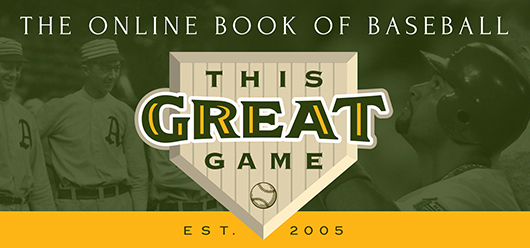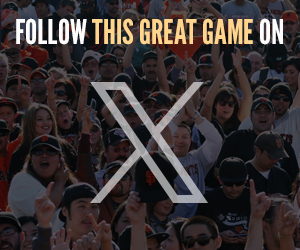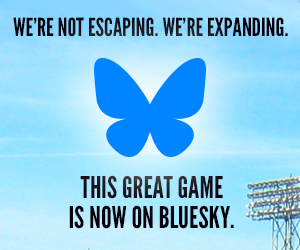THE TEAMS
The Diamondbacks’ Five Greatest Hitters
 Paul Goldschmidt (2011-18)
Paul Goldschmidt (2011-18)
The big first baseman from Delaware by way of Texas wreaked havoc in a short, sharp climb up the minor league ladder before his ascension in Arizona saw him emerge from promising prospect to perennial MVP candidate in just three-plus years in the majors.
“Goldy” became a quick favorite among fans and teammates with an easy-going attitude—USA Today’s Bob Nightengale wrote that he had the “ego of a grounds-crew worker”—and has let his bat do most of the talking. That bat was quite loud; he passed the rookie test in 2011 with eight homers and a .250 average in 48 games, and showed strong hints of things to come in that postseason when, in a losing NLDS effort to Milwaukee, he hit .438 and went deep twice. After a satisfying first full year under his belt in 2012, Goldschmidt exploded in 2013—hitting .302, pacing the National League with 36 home runs and 125 RBIs, and scooping up a Gold Glove award for his work at first base. Such results became the norm, as Goldschmidt consistently put up numbers averaging around the hallowed .300-30-100 combo. Additionally, Goldschmidt’s ability to draw walks (roughly 100 a year) and his deceptive speed for a big guy—he ranks second on the Diamondbacks’ all-time list in steals—added enhanced potency to his offensive game.
The Diamondbacks experienced all of Goldschmidt’s glory on the cheap, paying him through a very team-friendly, five-year deal worth $32 million; rather than enact a team option for $14 million in 2019, the team sent Goldschmidt to St. Louis—just one full season shy of him likely becoming the all-time franchise leader in hits, home runs, RBIs and runs scored. If the Diamondbacks were thinking that Goldschmidt’s best days were behind him as he approached his mid-30s, they were sorely mistaken; in his fourth season with the Cardinals, he won the NL MVP.
 Ketel Marte (2017-present)
Ketel Marte (2017-present)
The Dominican-born switch-hitter has been more of a which-hitter for the Diamondbacks—as in, which Ketel will show up on a yearly basis? Despite his inconsistent output with Arizona, Marte has nevertheless become a central and popular component of the Snakes’ roster.
Brought over with pitcher Taijuan Walker from Seattle in a 2017 trade that sent Jean Segura and Mitch Haniger the other way, Marte warmed up in the Valley of the Sun before breaking out in 2019 with an MVP-caliber campaign (.329 average, 32 home runs, 92 RBIs) that earned him his first of two All-Star starting assignments to date. Just as Marte looked to be on the cusp of superstardom, his performance dropped over the next three years, with injuries and relative inefficiency affecting his overall numbers. In 2023, Marte bounced back—leading the Diamondbacks to their second pennant, earning NLCS MVP honors against Philadelphia and carrying a postseason-record hit streak that ended at 20 games when he struck out as the final batter in the World Series against Texas. A year later, he refreshed back to elite form, producing career highs with 36 homers and 95 RBIs.
Contracted in Arizona through 2027 with a team option for 2028, Marte made historic news of sorts in 2021 when baseball-reference.com acknowledged him as the scorer of baseball’s two-millionth run—though MLB, relying on the Elias Sports Bureau, claimed the milestone occurred elsewhere two days later.
Luis Gonzalez (1999-2006)
Easily the most popular player in the Diamondbacks’ early years, Gonzalez was embraced as one of Arizona’s own despite having played his first nine major league seasons elsewhere. A career .268 hitter before arriving in Arizona, Gonzalez returned the love. In his first year with the D-Backs, he hit a career-high .336 with a league-leading 206 hits; his 26 homers and 111 RBIs also set career highs that would be eclipsed in 2000, then overwhelmed in 2001 when he punched out a whopping 57 homers with 142 RBIs. (The sudden statistical surge made Gonzalez a target of steroids conspiracy theorists, but he has steadfastly denied such use—he’s even publicly hoped that the list of steroid users secretly collected in 2003 would be revealed to clear his name.) “Gonzo” will be best remembered in that 2001 season not for his numbers, but for his walk-off, dying base hit off Mariano Rivera into short center field that sent home the World Series-winning run in Game Seven over the New York Yankees.
Gonzalez’s numbers went into decline after that magical year, but was still a threat through to his final days as a Diamondback in 2006, at the age of 39. In his seven-year tenure with the D-Backs, he clubbed out 40 or more doubles four times, and is 19th on the all-time list with 596.
Justin Upton (2007-12)
Selected as the first pick of the 2005 draft three years after brother B.J. also got notched first by Tampa Bay, Upton initially was considered the lesser of the two talents—but flowered into the Diamondbacks’ most dangerous hitter and potential MVP threat, finishing fourth in the 2011 NL tally.
Upton first made his mark in the 2007 postseason at the age of 20, making the most of part-time duty with a double and triple among five hits and a .357 average. Two years later, he developed into a star with a .300 average, 26 homers and 20 steals; he maintained that stature from that point on, more aggressively crowding the plate as assumed by getting hit a league-leading 19 times in 2011—a fact likely influenced by the presence of his hitting coach, Don Baylor.
Long-term stardom for Upton in Arizona was denied when he was traded to Atlanta after the 2012 season; it was suggested that he lacked the “gamer” element that manager Kirk Gibson demanded from his players. More likely, Upton was deemed expendable for his erratic numbers (an unfair argument considering his youthful age) and his flawed defense in the outfield, where he led the league three times in errors while with the Diamondbacks.
Steve Finley (1999-2004)
The adept center fielder emerged on the major league scene as a singles-and-steals specialist but suddenly developed a potent power stroke in San Diego just prior to his relocation in Arizona—and continued to pump away with over 30 homers in each of his first two seasons with the Diamondbacks. It was inevitable that Finley’s late-bloom booming would lead to suspicion during the steroid era, but he has never been legitimately tied to any such performance enhancement usage. Finley was a continual offensive force for Arizona during his five-plus years with the team—always hitting around the .280 mark—and his sharp defense with the Diamondbacks earned him three Gold Glove awards.
Arizona Diamondbacks Team History A decade-by-decade history of the Diamondbacks, the ballparks they’ve played in, and the four people who are on the franchise’s Mount Rushmore.
The Diamondbacks’ Five Greatest Pitchers A list of the five greatest pitchers based on their productivity and efficiency.
The Diamondbacks’ Five Most Memorable Games A list of five memorable games and other notable personal achievements that have defined the Diamondbacks’ history.







